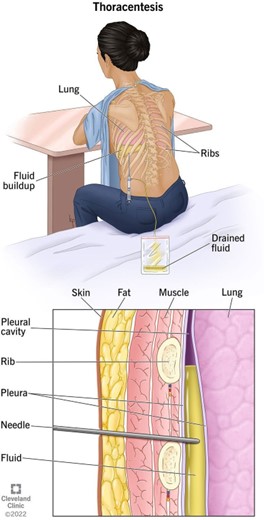A nurse is planning to administer an ophthalmic medication to a client. Which of the following actions will
minimize systemic absorption of the medication?
Apply light pressure to the inner canthus just after instilling the eye drops
Wipe the eye from the inner to the outer canthus with a sterile saline-moistened coton ball
Administer the medication drops directly into the lower conjunctival sac of each eye
Wait 5 min after instillation before instilling the drops in the other eye
None
None
The Correct Answer is A
Answer: A. Apply light pressure to the inner canthus just after instilling the eye drops.
Rationale:
A) Apply light pressure to the inner canthus just after instilling the eye drops.
Applying pressure to the inner canthus (the corner of the eye nearest the nose) helps occlude the nasolacrimal duct. This action reduces the systemic absorption of the medication by preventing it from draining into the nasal passages and subsequently into the systemic circulation, thus enhancing the local effect of the eye drops.
B) Wipe the eye from the inner to the outer canthus with a sterile saline-moistened cotton ball.
While this action may help remove excess medication or discharge, it does not minimize systemic absorption. Instead, wiping the eye could inadvertently spread the medication to other areas, increasing the chance of absorption rather than reducing it.
C) Administer the medication drops directly into the lower conjunctival sac of each eye.
While placing drops in the lower conjunctival sac is a standard practice for delivering ophthalmic medications, it does not directly influence systemic absorption. The main goal is to ensure adequate dosing in the eye, but systemic absorption can still occur if the drops drain into the nasolacrimal duct.
D) Wait 5 min after instillation before instilling the drops in the other eye.
Waiting between instillations is good practice to prevent dilution of the first dose and to allow for absorption. However, this action does not significantly impact systemic absorption. It focuses more on ensuring that the first dose is effective before administering a second dose.
Nursing Test Bank
Naxlex Comprehensive Predictor Exams
Related Questions
Correct Answer is D
Explanation
Answer: D
Rationale:
A) "Wash your newborn's head under a stream of running water": Washing the newborn's head under a stream of running water is not safe due to the risk of startling the baby or causing discomfort. Instead, the head should be gently washed using a damp cloth or sponge.
B) "Bathe your newborn within 30 minutes after a feeding": Bathing a newborn within 30 minutes after feeding is not advisable as it may cause discomfort or spitting up due to the baby's full stomach. It is better to wait for some time after feeding before bathing the baby.
C) "Start the bath by washing the newborn's diaper area first": Starting the bath by washing the newborn's diaper area first is not recommended. The face and head should be washed first to avoid spreading bacteria from the diaper area to other parts of the body.
D) "The bath water should be 100 to 103 degrees Fahrenheit": This is the correct temperature range for a newborn's bath water. It is essential to ensure that the water is warm enough to be comfortable but not too hot, to avoid burns or discomfort. The temperature should be checked with a thermometer or the elbow to ensure it is safe for the baby.
Correct Answer is C
Explanation
c. "I will have a chest x-ray following the procedure."
Explanation:
The statement that indicates an understanding of the information provided is "I will have a chest x-ray following the procedure."
Explanation for the other options:
a. "I will have general anesthesia during the procedure":
This statement is incorrect. Thoracentesis is typically performed using local anesthesia, which numbs the area where the needle will be inserted. General anesthesia, which induces a state of unconsciousness, is not usually required for this procedure.
b. "I will lie flat for 6 hours following the procedure":
This statement is incorrect. While the client may be advised to lie still for a short period after the thoracentesis, it is not necessary for them to lie flat for a full 6 hours. The specific post-procedure instructions may vary depending on the client's condition and the healthcare provider's preferences.
d. "I will breathe deeply through my nose during the procedure":
This statement is incorrect. During a thoracentesis, the client is typically asked to sit upright and lean forward to allow beter access to the space between the lungs and chest wall. They may be instructed to take slow, deep breaths and hold their breath for short periods as needed during the procedure to help maintain proper positioning and reduce the risk of complications.
In summary, the statement that demonstrates an understanding of the thoracentesis procedure is "I will have a chest x-ray following the procedure." This indicates the client's awareness of the need for a post- procedure chest x-ray to evaluate the results and ensure the absence of any complications.

Whether you are a student looking to ace your exams or a practicing nurse seeking to enhance your expertise , our nursing education contents will empower you with the confidence and competence to make a difference in the lives of patients and become a respected leader in the healthcare field.
Visit Naxlex, invest in your future and unlock endless possibilities with our unparalleled nursing education contents today
Report Wrong Answer on the Current Question
Do you disagree with the answer? If yes, what is your expected answer? Explain.
Kindly be descriptive with the issue you are facing.
